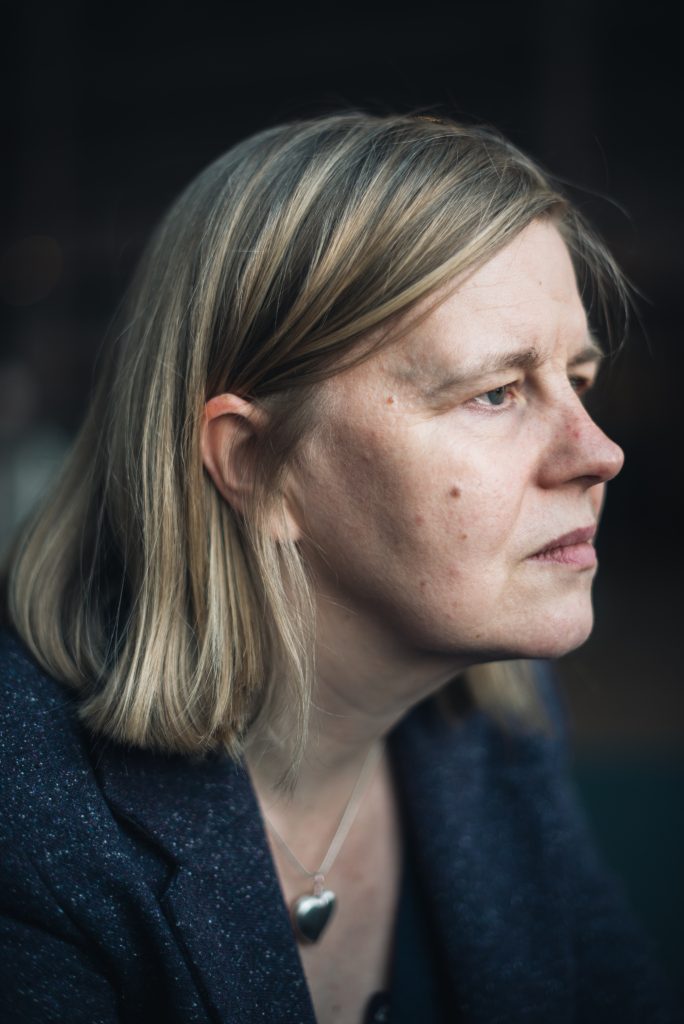
‘The Good Neighbours’ is a haunting, crackling mystery – and your next read
Look closer, Riverrun Press and Nina Allan’s latest venture ‘The Good Neighbours’ seems to urge. There is more to him. More to her death. More to this house. More to this life.

When Cath returns to the island off the coast of Scotland where she lived as a teenager, the past begins to emerge from the mists, bringing with it the memories – and even the voice – of her best friend Shirley Craigie, who was murdered there when both girls were fifteen. Shirley’s ghost haunts Cath, whispering in her ear that the past in not dead, but ever present, as destructive and unsettled as it is unresolved. Shirley’s father, John Craigie, who seemingly committed suicide on the day his daughter, wife and young son were found murdered, was blamed all those years ago for their deaths. But Cath can’t shake the feeling that something – or someone – isn’t quite adding up.
‘The house was haunted by John Craigie. The dolls had been in need of rescue, like Shirley herself.’
Cath, our protagonist is a strange gaze through which to see this world. Slightly obsessive, slightly grim, slightly disquieting, she takes a leave of absence from her shop job where she wound up when she failed to go to university after leaving the island. Having spent years chasing a photography career taking photos of houses where murders occurred – wonder where that obsession came from – she decides to confront the event from her teenagerhood that has plagued her for the last twenty years; Shirley Craigie’s murder.
‘What happened inside a house when no one was watching? What lives did they lead, Cath wondered drowsily, all the silent objects, the moonlit shadows flitting like goblins through the empty rooms?’
The Craigie house is more than just haunted – it is charged with a destructive and poltergeist-y energy. The abuse that Susan, Shirley and Sonny suffered there at the hands of the subdued and violent John Craigie lingers in the very walls of the place. But what also lingers is the strangeness of John Craigie’s presence. A talented but illiterate carpenter, his perspective flashes in and out of the narrative like a lit flame to Cath’s dark, internal morbidity. We see him in his youth, always ready for a fight, tormented by a youthful tragedy as well as an abusive father and obsessed with the fairy stories that his grandmother tells him. This is a chaotic and crackling portrait of a man who is strange and strained, violent and volatile, with a surging, all-encompassing need for validation, for release from his life that can’t hold him.
‘And there it was again, the dangerous schism between our world and theirs. Seduction and abandonment, the lure of mystical power, catastrophic collapse…’
The mystical, the mental and the mysterious link arms and dance psychotically though this novel, as Cath uncovers strange linkages and patterns emerging when she rummages further under the surface of the murder case, with Shirley’s voice in her ear urging her on. The past is resurrected, the clock hands spins ever backwards; Susan, Shirley and Sonny rise from the floor, and bullet whizzes back into a gun, their bodies whole again, John Craigie’s violent, twisted fantasies full of hellish fairies recede like a twisted Midsummer Night’s Dream, folding in and in and in upon itself, these many lives, until all that’s left is Cath at fifteen, with her life full and promising ahead of her.
‘Cath slid the key into the lock. It went in easily as if it had been used only hours before. The years receded, scattering like confetti. Like the pages of a journal, opened and read and digested and then thrown away.’
This is where the real heart of the story is. Why can’t Cath let go? Why can’t she see what everyone one else sees – John Craigie as the murderer? Why has her life been on hold since the day of Shirley’s death, a life filled with self-sabotage in her career, her relationships, her dreams? She described herself as an ‘observer, not a participant’ and therefore a born detective, but there’s something deeper happening than that. She is envious and repelled by the ‘sense of entitlement’ that men possess and is obsessed with saving things of no value. She is drawn to artists that suffer psychotic breakdowns, academics whose theories are outlandish and insane, she is entranced with the photography of violently charged spaces, all leading us to wonder, not what happened to Shirley, but what on earth happened to Cath?

Cerebral and academic, internal and intoxicating, this narrative is saturated with ominous fixation. Bursting and gasping, it strains off the pages in a compulsive and twisting read, a past begging to be uncovered, souls begging to be laid to rest, a story begging to told. Nina Allan has created a surging and artistic narrative that lingers like a cold breath down your neck at the turn of the last page.
'The Good Neighbours' is coming out June 10th and can be preordered now from Hachette.co.uk.









